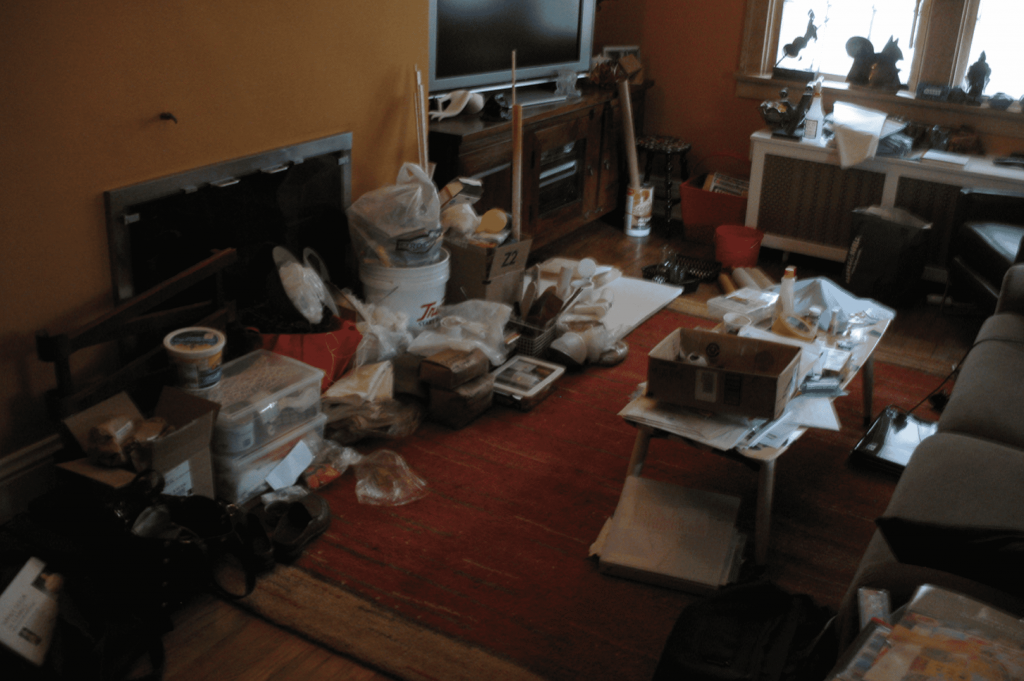
Outreach Israel: In-home psychotherapy
A man in his twenties ceased talking five years ago, and since then he secluded himself in his own home. A young girl consistently refuses to go to school. A woman suffers from depression but strongly resists treatment. These people and many others are no doubt in need of help but will not go out and search for it. The question is: can psychotherapy have something to offer them? In-home psychotherapy, such as provided by Outreach Israel, can play an important role here.
By Or Hareven, Clinical Psychologist, Outreach Israel.
Here are some segments taken from our presentation of Outreach Israel in the IARPP conference in Australia, 2017
We believe that in-home psychotherapy can offer professional accessible treatment to those who cannot benefit from psychotherapy in it's conventional way. This belief was the inspiration for Outreach Israel, founded by Or Hareven (Clinical Psychologist) in 2014 in Israel.
Outreach Israel is a mental health service model (currently available only in Israel, available in Hebrew and English). It's a service that offers tailor made psychotherapy and rehabilitation services, delivered in the client’s home or other relevant environments. The Outreach team strives to deliver personalised care. To do so we work with as many partners as possible within the family and relevant community, and combine psychological treatment with rehabilitation efforts to promote recovery.
?Why in-home Psychotherapy
Psychoanalysis started out as a privilege, kept only for those who could afford it. After Freud, therapy became more accessible in many ways: reduced number of weekly meetings, development of public psychological services and a constant growth in a variety of treatment methods. These changes enabled psychotherapy practice to respond more accurately to a wider range of people and difficulties. However, there are still many potential patients who greatly need help and are unable to reach it.
Through stepping outside of our clinic by offering in-home psychotherapy, at Outreach Israel we strive to expand the territory of conventional psychotherapy, and make it accessible for more populations. The expansion is geographic and concrete, but also conceptual and symbolic, as it changes therapy from its roots.

?Who do we help at Outreach Israel
In general, we try to help individuals and families who feel that the conventional settings and methods of mental health care are not suitable for them.
To mention some examples: people who deal with temporary or permanent physical disabilities (e.g geriatric population), people with restricting severe mental health conditions such as psychosis, depression, anxiety, social isolation, etc., families who deal with dependent or non functional family members and people who just need a different form of care.
In these cases and many others, since the patient cannot fit into the conventional therapeutic frame, the only way to provide help is by adapting the setting to his/her needs.
Characteristics of in-home psychotherapy
Much has been written about the importance of setting as a container for complex therapeutic processes. While acknowledge it's significance, we believe that it does not fit every person or situation. Inspired by Winnicott’s ideas regarding the facilitating environment, we consider that for some patients the most accurate environment is the natural one: the patients’ house, or even a bench in the park.
The shift in setting inherent to in home psychotherapy brings unique qualities to the treatment, two of which we will discuss herein:
1. The position of active Reaching Out
2. The consequences of stepping into reality
The position of active Reaching Out
Reaching Out starts primarily with an inner choice of the therapist to recognise the legitimacy of the patient's request to come to him. An initial assessment is made in order to dictate wether reaching out is indeed the right strategy. The attempt is always to encourage change and not preserve pathology due to the reaching out process.
The therapist is required to believe in his ability to be the ‘good enough’ caregiver, even outside the conventional setting, and trust in the skills he acquired during his training as inherent abilities. In that sense the therapist should cherish the treatment and not the setting.
That internal position is a symbol and a fact of a prior investment in the patient, which in a way launches the therapeutic process even before the first meeting ocured.

Clinical example 1
We meet many of our patients when they have reached a point of desperation, after years of failed experiences in conventional therapy. It seems that they want, consciously and unconsciously, someone to make an unusual effort for them, to see their suffering and walk towards them.
We received a call from the attorney of a man in his 70’s, living on the streets despite his economic abilities to support himself. He was homeless by choice and had no family. Starting his treatment was only possible by meeting him at a soup kitchen he frequently attended.
Two Outreach therapists arrived there to engage and gain his consent for treatment. They could identify him only from a picture they had been shown. Once recognising him, they've respectfully approached and asked for his permission to join him at the table. And so, the first psychotherapy session was launched.
His first reaction revealed how touched he was from the therapists' effort to reach out to him- “did you come here for me?” he asked with disbelief. The gesture of actively reaching out to him enabled a quick alliance. Two months later and with he helped his therapist, he had already moved out of the streets and into to an apartment.
Clinical example 2
Another example is of a patient in his twenties who was shut in his room for more than 3 years, not speaking with anyone else nor making eye contact. He was not functional at all and resisted treatment. We decided in coordination with his family to try and reach out to him and offer in home psychotherapy. At first, his reaction was to leave the apartment and walk away (leaving his home for the first time in years). The therapist followed him assertively and respectively, and then gently offered him to sit together on a bench. After a while, he agreed to meet the therapist regularly at a bench under his house.

The consequences of stepping into reality
Losing control
Working in the natural environment of the client confronts the therapist directly and powerfully with the reality of his or her life. This concrete encounter involves constant variables, which in most cases are out of the therapist’s hands: the scents in the patient's house, the temperature, presence of other people, voices, etc.
While in the clinic we invite the patient to meet under our conditions, during in home psychotherapy we are guests in the patients’ lives. However, we don’t consider reality to be ‘noise’ that interferes with treatment. On the contrary, we often see it as an endless platform of opportunities that can be harnessed for the benefit of the treatment.
It's important to keep in mind that the client also loses some control as he is letting a foreign factor into his life. For example, they need to release control over choosing what to share about their lives, as some of it is inevitably revealed in the home environment.
Sometimes the therapist and patient are exposed to the same external reality that is not controlled by either of them. Working in unsterile environments requires both the patient’s and the therapist’s flexibility and responsiveness.
Clinical example
Here we can look again at the case of the young man who escaped the therapist but eventually agreed to meet on the bench. Passers by were often staring at the odd situation, bursting the 'therapeutic bubble'. However it was also an opportunity to use the circumstances in favour of the treatment as relevant topics for conversation or common experiences to laugh or get angry.
Even nature summoned challenges, such as unexpected rain in one of the meetings that made the client and therapist run together to seek shelter. Eventually they were squeezed side by side under the slide at a nearby playground, in a closeness that would never have been possible in the clinic. Such events in the therapeutic process helped in forming experience of intimacy and partnership which eventually enabled the patient to break the wall of silence and speak with the therapist.
Meeting others during in-home psychotherapy
One more important consequence of entering into the clients’ life is the opportunity to meet figures in their lives: neighbours, friends, professionals or random community members.
These encounters may pop the interpersonal bubble that is part of conventional psychotherapy in the clinic. The challenge in this context is to find ways in which the presence of other figures in the therapy sessions doesn’t sabotage the intimacy of the therapeutic relationship, but rather make it stronger.
In fact, bonding in a limited way with the patients’ family and community may support the process of in home psychotherapy. With the mediation and guidance of the therapist, family and friends become organic support systems for the client.

Conclusion
We have briefly addressed some issues regarding the work of Outreach Israel while providing in home psychotherapy services.
We focused on two main aspects of this kind of therapeutic work which in fact represent the burst of two bubbles of traditional therapy: the geographic bubble (clinic) and the interpersonal bubble of the therapeutic dyad.
Our experience is that in many cases bursting these bubbles is not harmful and actually beneficial to the therapeutic process. Moreover, in many cases the readiness to reach out to a client is an essential condition to start the process; it can be the shift from a bubble with no treatment to a treatment with no bubble.
We hope that these perspectives and the practice that derived from them will enable an expansion in the range of psychotherapy methods and the populations of patients who can benefit from it.

